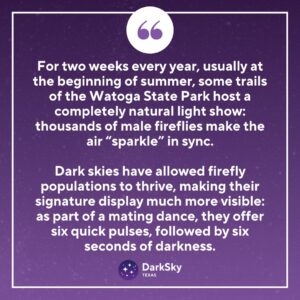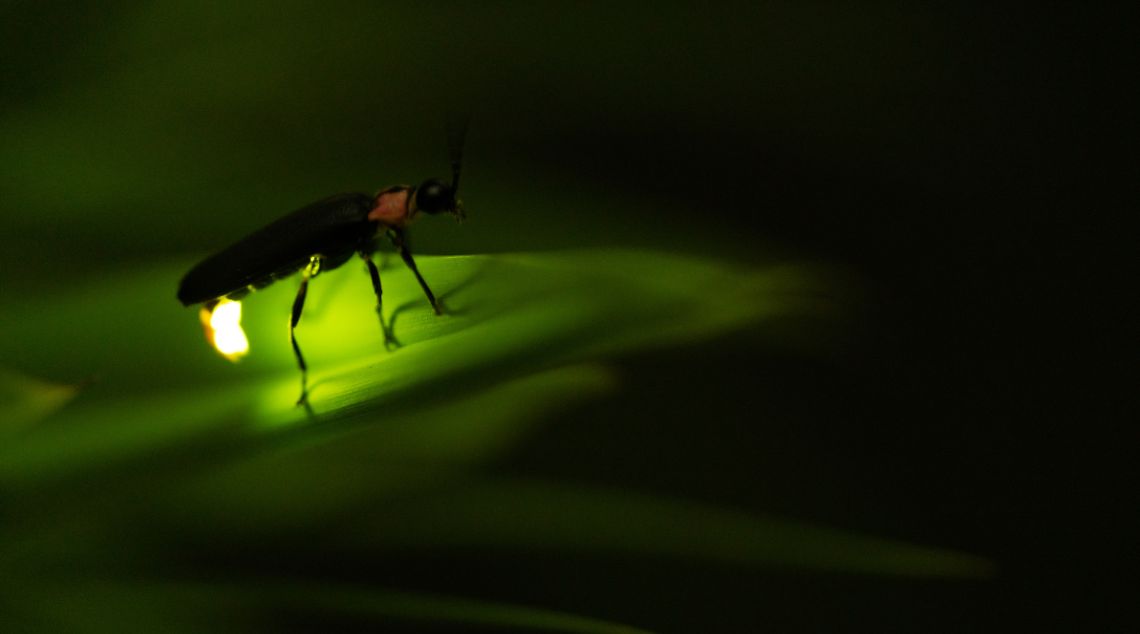Some of nature’s most enticing views are reserved for the night. Darkness may keep us from contemplating wide landscapes or deep valleys – but it also creates other unique, nearly magical sights.
A famous example? The synchronized light shows created by Photinus carolinus, or “rover firefly”, in Watoga State Park (West Virginia). Much rarer than other fireflies, these synchronous bugs can again be seen in their full splendor – in no small measure thanks to the efforts to restore dark skies to the area.
What Was Happening in Watoga State Park?
As West Virginia’s largest state park, Watoga State Park is one of the main tourist attractions in the State – with most of its clout being directly tied to its ability to preserve nature at its most pristine.
In 2019, the Park with its surrounding forests was designated as an International Dark Sky Place. With more than 19,000 acres, it now offers one of the biggest opportunities for nature to develop the way it always has.
The promise of unrestricted stargazing has naturally brought a new influx of tourists to the area. In addition to hikers and naturalists, the park now welcomes hundreds of amateur photographers, astronomers and stargazers.
But one event, in particular, stands out: for two weeks every year, usually at the beginning of summer, some trails of the park host a completely natural light show: thousands of male fireflies make the air “sparkle” in sync.
Natural night skies have allowed firefly populations to thrive, making their signature display much more visible: as part of a mating dance, they offer six quick pulses, followed by six seconds of darkness.

About the Synchronous fireflies
We don’t usually think of fireflies as rare – “lighting bugs” can be found in many places across the continental United States. However, most of these just emit a faint light around dusk. While an icon of summer evenings, these sparkles fall short of the spectacle created by the Photinus carolinus.
Why? Because these fireflies prefer to find mates in complete darkness, making their small lanterns all the more visible. In addition, their lightning patterns are synchronized. Male Photinus carolinus usually fly by themselves, lost among their much more numerous female peers. When surrounded by female fireflies, the males will light in unison and follow a very distinct pattern: six to eight quick flashes, followed by eight seconds of darkness before lighting up again.
But to witness this in any significant numbers, we need two conditions: enough fireflies around, and absolute natural darkness. Currently, these light shows can only be spotted in a handful of places along the U.S. East Coast – most of them, in remote areas of Appalachia or around the Smoky Mountains.
By making themselves visible, male fireflies can attract a mate and bring forth a new generation of lighting bugs. And by keeping the skies dark, we can help these small creatures find each other and continue thriving.
Want to Admire Nature Closer to Home?
Fireflies are not the only species that have seen their lifestyle and habitats affected by light pollution. Almost every living creature needs natural daylight during the day and natural darkness during the night. Everything from insects and birds and deer to wildflowers and trees require dark night skies to be healthy and have normal behaviors. Every time we certify a new Dark Sky location, we create a new haven for this species – as well as more frequent opportunities to admire and study them. With your help, we can help certify more International Dark Sky places, protect the ones we already have, and help landowners across the state join the fight against light pollution.


